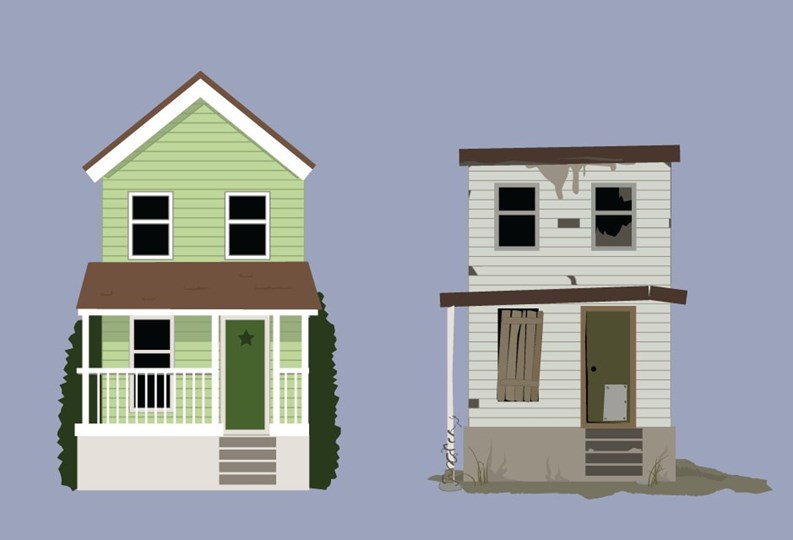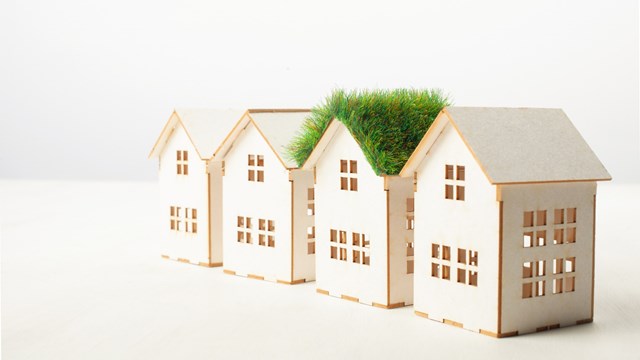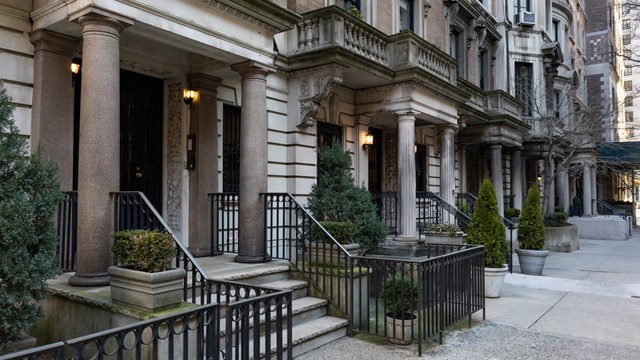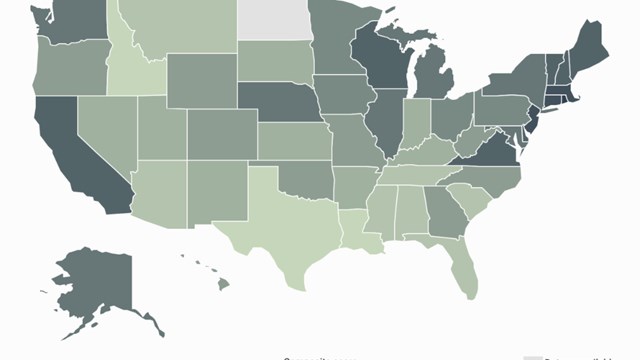Attractiveness and so-called ‘curb appeal’ are both vital to a building or HOA’s sense of community pride and overall value. After all, it’s hard to attract prospective homebuyers if your association’s grounds are scattered with litter, the flower beds are choked with weeds, and residents constantly have laundry hanging out their windows.
As important as they are, however, matters of taste can be some of the most hotly debated aspects of multifamily administration. Not everyone shares the same aesthetic sensibilities—and not everyone roots for the same football team, as will become clear.
Play by the Rules
The right of a unit owner to modify their exterior spaces are generally laid out in the rules and regulations of the building or association. These rules are neither cryptic nor surprising; they’re in the package of documents buyers receive during the purchasing process, and it’s their responsibility to understand them before closing the deal and moving in.
“By virtue of buying into a community association, you become a party to a contract – that contract being the association’s declaration,” says Nicholas Bartzen, an attorney with Levenfeld Pearlstein, LLC, in Chicago. “And that contract stipulates what you are and are not allowed to do. If you really want to paint your townhouse green and gold because you love the Green Bay Packers, you should be buying a single-family home. Because when you bought a townhouse in the ‘XYZ Association,’ you became party to a contract.”
In that contract, of course, are (probably) rules that prohibit Packers colors and a host of other things. “If you’re in breach of your duties under that contract, the association can take action, which includes lawsuit, fines, and fees – or sometimes just remediating the violation and charging those fees back to you,” Bartzen continues, “i.e., painting the house taupe or beige to cover over the Packer colors. So when unit owners go cowboy, they have to realize that the contract to which they’re bound gives the board a lot of power to remediate the issue.”
How strict or lax the rules are depends on the individual co-op or condo. But it all begins with the rules and regulations. “The rules should exhibit the association’s goal to make the community attractive and a desirable place to live, as well as one that furthers the goal of increasing property values,” says Jennifer L. Alexander, a partner at law firm Griffin Alexander P.C., in Randolph, New Jersey.
There are certain key considerations to be aware of when crafting these rules, she explains: “Will the rule positively impact the community? Is it in fact feasible/possible for unit owners to comply with the rule? Is it a rule that stands the test of time? Is the rule too costly to unit owners to comply with?”
Rules and regulations about appearances are a balance between what’s good for the individual and what’s good for the collective. “The way to find the balance is to understand that you want people to have a good quality of life through one of the best assets one can purchase in America, which is property,” says Nicole Lyew-Wooten of Allure Properties Group in Hamburg, New Jersey. “But you also want to remind them of why they moved to where they’re living. They moved there for a certain reason – so they can’t come and put up a [New England] Patriots mailbox just because that happens to be their favorite team. It doesn’t look like the mailboxes looked when they first moved in.”
So you can’t support the Patriots—but you can be patriotic. In some states, displays of the American flag are excepted from HOA rules and regulations. “Most communities do have rules that regulate hanging items outside windows, and what can be left outside of a unit in order to promote conformity,” says Alexander. “However, when unit owners wish to hang such items as U.S. flags, the Association must keep in mind that New Jersey law, and specifically N.J.S.A. 45:22A-48.1, bars associations from creating a rule that would limit or prohibit unit owners from displaying such flags outside of the unit, unless those displays threaten public safety, restrict necessary maintenance, interferes with the property rights of the unit owner’s neighbors, or is displayed in a manner that is inconsistent with the rules and customs that regulate how a flag should be displayed. Similarly, Mazdabrook Commons Homeowners’ Ass’n v. Khan, 210 N.J. 482 (2012), sets forth similar restrictions on homeowners’ associations when it comes to the unit owner’s freedom to display political signs.”
Strict Standards
While those of a more libertarian bent may chafe at the idea of surrendering freedom of expression just to have access to a nice clubhouse and be surrounded by well-manicured landscaping, there are good reasons for imposing strict regulations on outward appearances. “Maintaining strict standards allows an association to maintain its appearance, which helps grow property values,” Alexander explains. “Additionally, strict standards ensure that no subjective decisions are made with the aesthetics of any one or more units.”
On the flip side, playing fast and loose with the rules and regulations can have a deleterious effect on a property. “If the rules aren’t enforced to a reasonable degree, things can get out of control,” says Lyew-Wooten. “The identity of the community and the things the association are about can be gone. If you have a whole bunch of basketball hoops and bikes all over the place, it’s not the community that the board wants, and what the owners moved into. And they always say that… this is not what you bought into. If I let one commercial vehicle in, then you’re gonna get five other vans that come in.”
Bartzen notes other issues that can arise in these circumstances. “When associations get too lax about enforcing these rules, two things can happen,” he says. “Number one, a unit owner who is sick of seeing the association just go to pot can file a breach of fiduciary duty claim against the board, saying, ‘Hey, your entire job is to uphold the rules and regulations and governing documents. You’re not doing it, and I’ve been harmed, because now I can’t sell my unit.’ So there’s that possibility for a lawsuit. Number two, when the board does not uniformly apply the rules, it can get into trouble when it finally does decide to stand up and pay attention. Hypothetically, say you let one guy paint his house the colors of his favorite football team, and next year, you have a couple [of] people who like different teams with different colors, and now they want to do the same thing. And if the board says that they can’t, the board might be legally stopped from enforcing those rules, because it failed to do so in the past. You have to apply rules and regulations uniformly to ensure that you’re not accused of selective enforcement.”
Common Causes of Conflict
People who buy into condos (and even more so into co-ops) tend to see the value of the unit as a whole, and thus are less prone to break the rules than the average homeowner. When problems do arise, they tend to be centered around the same general causes.
“Commercial vehicles are one of the biggest violations in any community,” says Lyew-Wooten. “I don’t care where it is. Any manager will tell you that. Because these days a person can be a plumber and work from home and have his own business. But you cannot have that vehicle in the driveway. It has to go in the garage. If there is no garage, and the community just has parking lots, it’s a bigger issue. And it’s a problem when the person is a rental tenant, because people don’t always explain these things to renters. It can be a hardship – especially if the vehicle gets towed. But commercial vehicles cannot be on the property.”
Another cause of conflict: landscaping. “Landscaping right in front of a homeowner’s unit is a more controversial issue,” says Alexander. “Some homeowners feel that the space is theirs to maintain, even though generally that space is identified in the governing documents as a common element, and thus the responsibility of the association. However, some associations allow owners to have some discretion in the area directly outside of their unit – i.e., allowing some plantings – but making sure that the unit owners maintain the area in order to promote conformity.”
Along the same lines are gazebos and canopies. “They’re very attractive, but when you start getting different ones… if you’re going down the street and one yard has a green one, and one yard has a beige one… that’s when they’ll have to say whether these are allowed,” says Lyew-Wooten. “It’s definitely a change that’s come in the last 10 years, as outdoor items have become way more affordable. It used to be that someone would say they wanted to put an awning on the back of their house, and we’d say, ‘Yeah, right. You’re gonna spend $7,000 on an awning?’ But now prices have come down, and people want to buy these things, and we have to adjust to the times.”
At the end of the day, however, neighbors tend to blow the whistle on their neighbors for personal reasons. “When a unit owner makes a complaint against a neighbor, quite often it’s because he’s just annoyed,” explains Bartzen. “But he may couch the complaint under the guise of ‘property values’ or ‘resale values’ because that’s a little bit more of a palatable, quantifiable complaint. It’s just a more respectful or sturdy position to take, as opposed to ‘I subjectively don’t like that.’”
While certain standards and guidelines are typical across most associations, it’s really up to each individual board and community to decide what’s right for them, and what aesthetic and visual standards they wish to promote and uphold. Regardless of whether a building is prepared to allow residents to leave Christmas lights hanging out their windows until the spring thaw, or paint their front door Packer green, the rules must be clear, consistent, and fairly upheld.
Greg Olear is a freelance writer and published novelist, and a frequent contributor to The Cooperator.










Leave a Comment